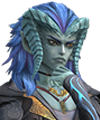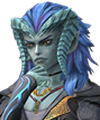You are using an out of date browser. It may not display this or other websites correctly.
You should upgrade or use an alternative browser.
You should upgrade or use an alternative browser.
Xenoblade Chronicles X - Twitter & Website updates thread
- Thread starter L~A
- Start date
- Status
- Not open for further replies.
pinkurocket
Member
Fuck you
HEROPON AMIIBO!!!!!!!!!!!!!!!!!!!!!!!!!!!!!!!
YES
PLEASE
edit: omg
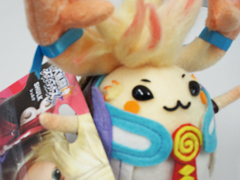
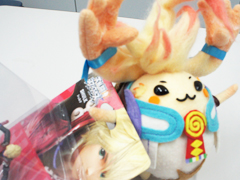
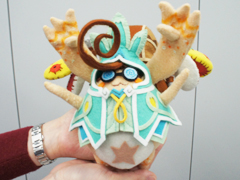
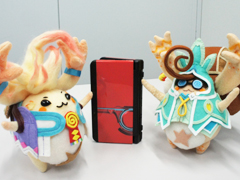
I want!!
I was under the impression Elma, Lynlee, Tatsu and Ru were the only playable characters announced so far (maybe Irina too?), but someone in the previous page said Tatsu isn't playable? Maybe even Ru isn't (I hope he is, because his design is great)?
What? You can see Tatsu in the party on multiple occasions in past trailers. Irina is definitely playable (again seen in a past trailer). Even though it's not confirmed I'd say that Ru's placement on the Kizunagram and the story trailer from E3 is evidence of him being playable as well...
Dr. Buni
Member
Apparently Tatsu doesn't appear in the HUD and he isn't among the party members in the affinity chart. He could be a guest character...What? You can see Tatsu in the party on multiple occasions in past trailers. Irina is definitely playable (again seen in a past trailer). Even though it's not confirmed I'd say that Ru's placement on the Kizunagram and the story trailer from E3 is evidence of him being playable as well...
I wonder how many party members there are in the game. Hopefully not an excessive amount (the more characters, the less development and focus they get).
Edit: By the way, speaking of party members, will you be able to control them directly like in Xenoblade? Or are you obligated to play as the avatar in Xenoblade X?
Apparently Tatsu doesn't appear in the HUD and he isn't among the party members in the affinity chart. He could be a guest character...
I wonder how many party members there are in the game. Hopefully not an excessive amount (the more characters, the less development and focus they get).
Edit: By the way, speaking of party members, will you be able to control them directly like in Xenoblade? Or are you obligated to play as the avatar in Xenoblade X?
His placement on the Kizunagram IS odd for sure, but considering the number of guest slots you have (5?) it would be weird to have all your guests following along behind you. Also odd is his prime placement on the box art...
Also, going by the first trailer, you can play as every character (unless they took it out, which I doubt)...
SkeptiMism
Member
You can switch the player character freely. It was confirmed in the Famitsu interview if I remember correctly.
Irina and even that young guy (don't remember the name)I was under the impression Elma, Lynlee, Tatsu and Ru were the only playable characters announced so far (maybe Irina too?), but someone in the previous page said Tatsu isn't playable? Maybe even Ru isn't (I hope he is, because his design is great)?
Dr. Buni
Member
His placement on the Kizunagram IS odd for sure, but considering the number of guest slots you have (5?) it would be weird to have all your guests following along behind you. Also odd is his prime placement on the box art...
Also, going by the first trailer, you can play as every character (unless they took it out, which I doubt)...
You can switch the player character freely. It was confirmed in the Famitsu interview if I remember correctly.
I see. That is interesting, people who don't like avatar characters might as well ignore Cross and play with the others, specially if she/he is a supporting protagonist like I think they might be.Irina and even that young guy (don't remember the name)
Anyways, so Cross, Elma, Lynlee, Tatsu (maybe), Irina, Guin (the young guy?) and Ru are playable. That is 5/6. That cat-like person might be another party member, I think.
I was under the impression Elma, Lynlee, Tatsu and Ru were the only playable characters announced so far (maybe Irina too?), but someone in the previous page said Tatsu isn't playable? Maybe even Ru isn't (I hope he is, because his design is great)?
If the affinity chart slip is anything to go by, there's at least 9 playable characters, I think.
I thought I saw Tatsu in the party in one of those Nintendo Direct videos, maybe I imagined it. It would be weird if he wasn't at least available to the party (he's in so many of the cut-scenes too), maybe he doesn't battle though.
Really hope we can switch and control these other party characters in single player, even if it's just outside battle like in Xenoblade.
It was? Nice. I missed that info.
Really hope we can switch and control these other party characters in single player, even if it's just outside battle like in Xenoblade.
You can switch the player character freely. It was confirmed in the Famitsu interview if I remember correctly.
It was? Nice. I missed that info.
Fuck you
HEROPON AMIIBO!!!!!!!!!!!!!!!!!!!!!!!!!!!!!!!
THAT'S WHY I SAID WHOLE PARTY YOU FUCKER!!!!!
j/k lol 
Really hope we can switch and control these other party characters in single player, even if it's just outside battle like in Xenoblade.
Can't remember what we've seen in other trailers, and this could've specifically been knocked up for the field exploration video, but Elma is clearly under player control here with the avatar MC following
https://www.youtube.com/watch?v=rtNzxuly294&t=3m7s
I'd be genuinely surprised if we couldn't directly control any particular member of our party.
Edit: plus, you know, apparently it's been confirmed with actual words from an actual developer!
Can't remember what we've seen in other trailers, and this could've specifically been knocked up for the field exploration video, but Elma is clearly under player control here with the avatar MC following
https://www.youtube.com/watch?v=rtNzxuly294&t=3m7s
I'd be genuinely surprised if we couldn't directly control any particular member of our party.
Edit: plus, you know, apparently it's been confirmed with actual words from an actual developer!
Yeah that makes sense, though that could've been done for that event it's pretty obvious we can do it if they actually said so lol.
My only remaining hope for this game then is that there's more variety either hidden in the environments we've seen or that there's a least one or two more areas and maybe some small alien towns (or maybe they'll make my dreams come true and we'll see another planet but I'm not counting on that much anymore). I knew the premise would be weaker than living on two giant Gods, but so far we've only seen 5 (admittedly giant-thanks for reminding me every time Tatsu) areas and one city.
Dr. Buni
Member
That is more than I'd like. Hopefully the number of playable chars doesn't affect their quality. I like most party members in Xenoblade and I want to like the X ones as well.If the affinity chart slip is anything to go by, there's at least 9 playable characters, I think.
But you can control the party characters in battles in Xenoblade (well, not all three at once, because that wouldn't work with the battle system of the game).Really hope we can switch and control these other party characters in single player, even if it's just outside battle like in Xenoblade..
But you can control the party characters in battles in Xenoblade (well, not all three at once, because that wouldn't work with the battle system of the game).
Yeah but you can't switch to control them directly during a battle (except for chain attacks that go between all active battle members), that's what I meant.
threelights
Member
I know what they are. I'm saying I want them here too in some form.in the first game heat to hearts where locations on the map were cut-scene would happen between party members a conversation would take place where you had a few options correct answers would raise affinity/closeness of friendship as they all mean the same it impacted how well you fought together in some ways I guess
anyway heart to heart is just core party affinity done as a cut-scene test with responses you chose you could also raise affinity by giving correct gifts as well to raise just like the wrong answers would drop levels the wrong gift to a party member would also drop the status
NPC affinity was quests based which was more like doing long string of things for them making deliveries or killing monsters, getting items
heart to heart was just finding the many cutscene locations and hope you responded correctly to everything at that spot
Also, it could be considered a sidequest, since you have to raise affinity to be able to see it.
9 is totally doable man, specially with a game as big as Xenoblade.That is more than I'd like. Hopefully the number of playable chars doesn't affect their quality. I like most party members in Xenoblade and I want to like the X ones as well.
I do hope that the supporting cast has more screen time too though, Van Damme looks awesome.
I was under the impression Elma, Lynlee, Tatsu and Ru were the only playable characters announced so far (maybe Irina too?), but someone in the previous page said Tatsu isn't playable? Maybe even Ru isn't (I hope he is, because his design is great)?
I have a strange feeling that Irina
dies
Dr. Buni
Member
Oh, now I get what you mean.Yeah but you can't switch to control them directly during a battle (except for chain attacks that go between all active battle members), that's what I meant.
You are right, I probably shouldn't worry. Yet. And yeah, Van Damme looks great, hope he gets at least Dickson levels of screen time.9 is totally doable man, specially with a game as big as Xenoblade.
I do hope that the supporting cast has more screen time too though, Van Damme looks awesome.
That would be interesting,I have a strange feeling that Irinaearly in the game. There was a very brief shot of her in one of the trailers looking shocked while piloting a mech. It got me thinking. I'll see if my hunch was right.dies
although I like her design, so Guin should die instead 
Smiles and Cries
Member
he would not tease wanting an amiibo line if they have something planned show them off so people can plan campouts and pre-orders
my bad
I only want them if there are romantic themed relationship in this game
I know what they are. I'm saying I want them here too in some form.
Also, it could be considered a sidequest, since you have to raise affinity to be able to see it.
9 is totally doable man, specially with a game as big as Xenoblade.
I do hope that the supporting cast has more screen time too though, Van Damme looks awesome.
my bad
I only want them if there are romantic themed relationship in this game
https://www.youtube.com/watch?v=-mo6zNEEWpYhttp://ku-so.hatenadiary.jp/entry/2015/02/17/232117
Someone found some possible track names of this game from JASRAC.
God exist, man I love Sawano's songs ~
That is more than I'd like. Hopefully the number of playable chars doesn't affect their quality. I like most party members in Xenoblade and I want to like the X ones as well.
I think 9 is the sweetspot. Xenoblade had 7, and still had characters that were constantly showing up in cutscenes traveling with the party like Alvis and Dickson.
Either way seems to be a huge game, so I assume there will be plenty of screen time to be had for each character.
SatoAilDarko
Member
I still feel like Tatsu is a unique fourth party member who always in the party and works differently than others. I haven't seen any weapon specialization by specific characters. They all have similar weapons in trailers.
I think they can all use the same weapons as evidenced by all having Melee and long-range options along with no dedicated healer anymore.
As such Tatsu would be in a weird position as he obviously can't use the same equipment as anyone else based on size. Just my theory.
As for Amiibo I'll gladly take Heropon Amiibo but what I really want are those plushes.
I think they can all use the same weapons as evidenced by all having Melee and long-range options along with no dedicated healer anymore.
As such Tatsu would be in a weird position as he obviously can't use the same equipment as anyone else based on size. Just my theory.
As for Amiibo I'll gladly take Heropon Amiibo but what I really want are those plushes.
Like this?Any HD desktop wallpapers for this game with the mech?
http://i1.minus.com/ibc02kbmnGOMun.jpg
Someone else posted it a week or so ago. I love it.
paolo11
Member
Like this?
http://i1.minus.com/ibc02kbmnGOMun.jpg
Someone else posted it a week or so ago. I love it.
Nice. Thanks, brother.
Dr. Buni
Member
Yes, but I assume this will be the case for Xeno X as well (supporting chars traveling together here and there), so 9 party members + who knows how many supporting chars... and I just hope they aren't affected by the increase in numbers. My worries might sound silly, but characters are the thing I care about the most in games that focus on story (among other things).I think 9 is the sweetspot. Xenoblade had 7, and still had characters that were constantly showing up in cutscenes traveling with the party like Alvis and Dickson.
Either way seems to be a huge game, so I assume there will be plenty of screen time to be had for each character.
That said, Monolith Soft earned my trust with Xenoblade Chronicles, so as I said in my latest post, I am likely worrying for nothing.
Any HD desktop wallpapers for this game with the mech?
There's actually an even higher res one
http://fc05.deviantart.net/fs71/f/2015/050/5/4/_7008x3760__by_onilink888-d8io46e.png
7008x3760, 29.6MB Sweet Jesus!
paolo11
Member
There's actually an even higher res one
http://fc05.deviantart.net/fs71/f/2015/050/5/4/_7008x3760__by_onilink888-d8io46e.png
7008x3760, 29.6MB Sweet Jesus!
OHH YEAHHH!!!
paolo11
Member
That super hi res ones gives a nice look at the characters as well
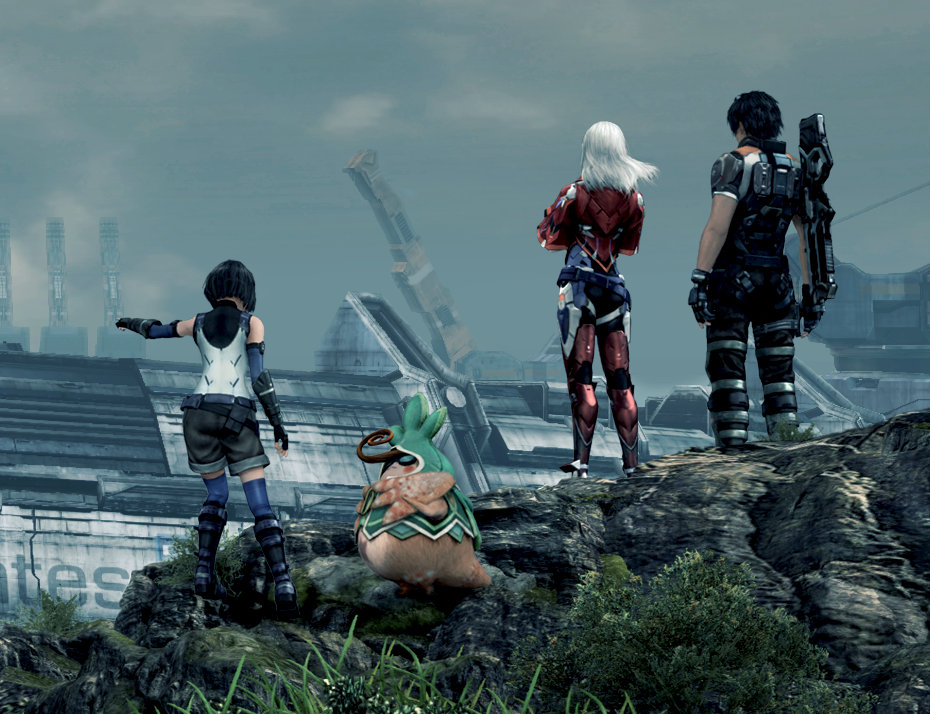
I'll put that on my gaming laptop and desktop.
Dr. Buni
Member
I think they should have picked a different model for each new trailer, but instead they used the same (sorta ugly) one in most trailers. Welp.
Oh, that screen above is really nice. The more I look at the designs, the more I like them, specially Lynlee's (to be fair, I never really disliked the designs like half of XenoGAF).
Oh, that screen above is really nice. The more I look at the designs, the more I like them, specially Lynlee's (to be fair, I never really disliked the designs like half of XenoGAF).
pinkurocket
Member
That super hi res ones gives a nice look at the characters as well

Tatsu not giving a fuck and looking the other way.
Or he just ignores Lyn because she wants to eat him.
God bless Tatsu.
Where did this huge image come from? Was it an official release from Nintendo/Monolith or did some very talented independent artist draw it?That super hi res ones gives a nice look at the characters as well
[小島]ホッパーカメラとナビゲーションボールが好評みたいですね。実は直線的な移動についてはオートランの機能も入っていますし、勿論スキップトラベルもあります。
https://twitter.com/XenobladeJP/status/569777915333718017
でも開発としては、ゆっくり移動して色々な景色やエネミーの配置を楽しんでいただきたいのでできればあまり使わないで欲しいという矛盾が この辺、難しいですよね。
https://twitter.com/XenobladeJP/status/569777959227125760
foxuzamaki
Doesn't read OPs, especially not his own
Smiles and Cries
Member
been a while hope we get a good update soon
protomouse
Member
Thank God for the kind GAFers who translate these things. Google Translate is utterly useless. Something, something, fast-travel.
Thank God for the kind GAFers who translate these things. Google Translate is utterly useless. Something, something, fast-travel.
Yeah, it's all thanks to duckroll and StreetAhead.... though neither seem to be online atm, ha ha.
StreetsAhead
Member
My translation:
[Kojima] It appears that the Hopper Camera and Navigation Ball have been well received. For straight movement, there's an auto-run feature and of course, there's also the skip travel. As a developer, however, I feel conflicted because I want you to travel leisurely and enjoy the various views and the enemy placement...This is a tricky point, isn't it.
[Kojima] It appears that the Hopper Camera and Navigation Ball have been well received. For straight movement, there's an auto-run feature and of course, there's also the skip travel. As a developer, however, I feel conflicted because I want you to travel leisurely and enjoy the various views and the enemy placement...This is a tricky point, isn't it.
Thanks a bunch, gonna add that to the OP
Smiles and Cries
Member
well if there is one way I would want to play this game the first time through leisurely is a good word for it
Can someone explain what the Hopper Camera is?
It's a special camera you use to observe your surrounding. Check out the 2nd post of this thread, there's a video about it!
I've been following this thread sporadically, but Kojima is a common last name, right? I'm just an idiot and it's a different person talking in the last translated tweet, correct?
EDIT:
Thanks kindly. Had a minor freakout thinking Hideo was the one working on this, haha.
I just cropped this to make it my new dual screen wallpaper (2560x1024), and goddamn is this beautiful
EDIT:

Dude next to Takahashi.
Thanks kindly. Had a minor freakout thinking Hideo was the one working on this, haha.
There's actually an even higher res one
http://fc05.deviantart.net/fs71/f/2015/050/5/4/_7008x3760__by_onilink888-d8io46e.png
7008x3760, 29.6MB Sweet Jesus!
I just cropped this to make it my new dual screen wallpaper (2560x1024), and goddamn is this beautiful
TheMoon
Member
I've been following this thread sporadically, but Kojima is a common last name, right? I'm just an idiot and it's a different person talking in the last translated tweet, correct?

Dude next to Takahashi.
Thanks! I was really drunk when I wrote that post so I don't remember it, but I'll take it.
StreetsAhead
Member
I rewatched the video of both Treehouse demos yesterday (One, Two)and in trying to get my head around the battle system and how it differs from Xenoblade, I started writing what I knew down since that's how I learn best and although I feel like it's super old information, but I'm mostly curious about how my understanding of the battle system matches up.
Battle Controls
L-Button: Target Lock
L-Stick: Character movement
D-Pad: Arts selection
R-Button: Target (presumably will make hitting l/r on the D-pad change target)
X: Weapon Change
A: Select Arts
B: Soul Voice actions
R-Stick: Camera
R-Stick Click: Enemy Body Part Lock
+ Button: Battle Menu
Attack
You attack in real time using your arts and they have a cool-down/recharge time, just as in Xenoblade. However, some arts can be double charged (like the shield) so that you can use them in quick succession. The example they give in the video is using the shield once on yourself and then on Elma. It actually seems like you can charge at least some arts 3 times before using them; you can see below the art 'Assault Hammer' has トリプルリキャスト, or 'Triple Recast'.
You can switch weapons on the fly; between ranged and melee. Arts that only work with one sort of combat won't charge while using the other type.
You can also switch classes mid-battle, which will change your arts palette.
Some arts will work more or less effectively depending on where you stand and which part of the monster you are attacking. As listed above in the controls, you can lock your target on one part of the monster by clicking down on the right control stick.
Arts can be upgraded using Battle Points (BP) you earn from beating enemies.
Healing
While you can apparently heal yourself, you cannot directly heal another party member using your own arts. There is no 'healer' or 'healer class' in the game. You can heal other players indirectly by using the 'Soul Voice' and successfully hitting the B button during in-battle events.
However, you can revive party members using TP.
Technical Points
Technical Points, TP, build up by using arts during battle. Melee arts apparently build TP faster than ranged arts.
You can revive a team member using 1,000 TP by pressing the b-button near where they fainted.
The player character starts off with a maximum of 3,000 TP according to the Treehouse demo.
Soul Voice
Of everything, I feel as though my understanding of Soul Voice is the weakest, but it sounds as though your party members will give orders to you via orange dialogue boxes, asking you to perform specific arts or attack specific body parts. Doing so within a certain time will raise your 'Soul Stage' (the yellow bar just above the arts palette), which will trigger the B-button based events, where you must hit b within a certain time (good timing = succeeded, perfect time = huge succeeded). This will then help heal your party members (and provide other bonuses?).
The higher your Soul Stage is the faster these b-events are and the shorter window for successful execution.
I think. I'm not sure.
Classes
You can select a class for your character. Each class will learn a different set of arts. Once you've learned an art it can be mix and matched with other arts to customize your play style better.
Here are the classes and their basic weapon types(melee on the left, range on the right) from the Treehouse video:
Lvl 1 Class
Drifter: Knife, Assault Rifle
Lvl 2 Classes
Assault: Long Sword, Assault Rifle
Command: Dual Sword, Dual Gun
Forcer: Knife, Ray Gun
Lvl 3 Classes
Samurai Gun: Long Sword, Assault Rifle
Shield Battler: Shield, Gatling Gun
Sword Fang: Dual Sword, Dual Gun
Long Lancer: Javelin (Spear), Sniper Rifle
Psy Seeker: Knife, Ray Gun
Blast Fencer: Photon Sabre, Psycho Launcher
Lvl 4 Classes
[Unknown]
Heavy Striker Shield, Gatling Gun
FullMetal Jaguar: Dual Sword, Dual Gun
Star Crusader: Javelin (Spear), Sniper Rifle
Elite Planner: Knife, Ray Gun
Galaxy Knight: Photon Sabre, Psycho Launcher
They didn't highlight one of the classes in the right-hand most column in either video so we don't know what that one it. As they say in the video, class names aren't final for the English version.
Within each weapon 'type' it seems as though there will be different kinds of weapons. For instance, you start the game off with the 'Proto Knife' and the 'Proto Gun' which are listed as types of 'knife' and 'assault rifle' respectively.
Treasure Drops
Unlike Xenoblade, treasure boxes don't appear on the field after battle. Instead, once the enemies are defeated, a dialogue box opens with a list of treasure chests you've earned. It appears you still need to open them in this window, though, as the contents don't automatically appear on the Item List.
Once you've opened them you have the following options:
Take All
Take Some
Sell All
Treasure Deal
Environmental Effects
Under environmental effects, we see two rows of boxes. One for weather effects and one for zone effects.
According to the Treehouse members, weather apparently have an effect on enemy behavior and types, but it seems it will also provide overall boosts or debuffs to your party. There is space for up to 4 effects caused by weather.
Zone Effects are presumably effected by data probes, in addition to possible general affects in each zone. There is space for up to five zone effects.
(Incidentally, we can also see space for up to 4 'Guest Characters' in this menu screen.)
--
So, that's everything that I noticed and how I understand it, but I'm sure there are other people more knowledgeable than me who can correct me.
And so I'll end on a reminder that you can hunt for items in steaming piles of giant monster poop.
Battle Controls
L-Button: Target Lock
L-Stick: Character movement
D-Pad: Arts selection
R-Button: Target (presumably will make hitting l/r on the D-pad change target)
X: Weapon Change
A: Select Arts
B: Soul Voice actions
R-Stick: Camera
R-Stick Click: Enemy Body Part Lock
+ Button: Battle Menu
Attack
You attack in real time using your arts and they have a cool-down/recharge time, just as in Xenoblade. However, some arts can be double charged (like the shield) so that you can use them in quick succession. The example they give in the video is using the shield once on yourself and then on Elma. It actually seems like you can charge at least some arts 3 times before using them; you can see below the art 'Assault Hammer' has トリプルリキャスト, or 'Triple Recast'.
You can switch weapons on the fly; between ranged and melee. Arts that only work with one sort of combat won't charge while using the other type.
You can also switch classes mid-battle, which will change your arts palette.
Some arts will work more or less effectively depending on where you stand and which part of the monster you are attacking. As listed above in the controls, you can lock your target on one part of the monster by clicking down on the right control stick.
Arts can be upgraded using Battle Points (BP) you earn from beating enemies.
Healing
While you can apparently heal yourself, you cannot directly heal another party member using your own arts. There is no 'healer' or 'healer class' in the game. You can heal other players indirectly by using the 'Soul Voice' and successfully hitting the B button during in-battle events.
However, you can revive party members using TP.
Technical Points
Technical Points, TP, build up by using arts during battle. Melee arts apparently build TP faster than ranged arts.
You can revive a team member using 1,000 TP by pressing the b-button near where they fainted.
The player character starts off with a maximum of 3,000 TP according to the Treehouse demo.
Soul Voice
Of everything, I feel as though my understanding of Soul Voice is the weakest, but it sounds as though your party members will give orders to you via orange dialogue boxes, asking you to perform specific arts or attack specific body parts. Doing so within a certain time will raise your 'Soul Stage' (the yellow bar just above the arts palette), which will trigger the B-button based events, where you must hit b within a certain time (good timing = succeeded, perfect time = huge succeeded). This will then help heal your party members (and provide other bonuses?).
The higher your Soul Stage is the faster these b-events are and the shorter window for successful execution.
I think. I'm not sure.
Classes
You can select a class for your character. Each class will learn a different set of arts. Once you've learned an art it can be mix and matched with other arts to customize your play style better.
Here are the classes and their basic weapon types(melee on the left, range on the right) from the Treehouse video:
Lvl 1 Class
Drifter: Knife, Assault Rifle
Lvl 2 Classes
Assault: Long Sword, Assault Rifle
Command: Dual Sword, Dual Gun
Forcer: Knife, Ray Gun
Lvl 3 Classes
Samurai Gun: Long Sword, Assault Rifle
Shield Battler: Shield, Gatling Gun
Sword Fang: Dual Sword, Dual Gun
Long Lancer: Javelin (Spear), Sniper Rifle
Psy Seeker: Knife, Ray Gun
Blast Fencer: Photon Sabre, Psycho Launcher
Lvl 4 Classes
[Unknown]
Heavy Striker Shield, Gatling Gun
FullMetal Jaguar: Dual Sword, Dual Gun
Star Crusader: Javelin (Spear), Sniper Rifle
Elite Planner: Knife, Ray Gun
Galaxy Knight: Photon Sabre, Psycho Launcher
They didn't highlight one of the classes in the right-hand most column in either video so we don't know what that one it. As they say in the video, class names aren't final for the English version.
Within each weapon 'type' it seems as though there will be different kinds of weapons. For instance, you start the game off with the 'Proto Knife' and the 'Proto Gun' which are listed as types of 'knife' and 'assault rifle' respectively.
Treasure Drops
Unlike Xenoblade, treasure boxes don't appear on the field after battle. Instead, once the enemies are defeated, a dialogue box opens with a list of treasure chests you've earned. It appears you still need to open them in this window, though, as the contents don't automatically appear on the Item List.
Once you've opened them you have the following options:
Take All
Take Some
Sell All
Treasure Deal
Environmental Effects
Under environmental effects, we see two rows of boxes. One for weather effects and one for zone effects.
According to the Treehouse members, weather apparently have an effect on enemy behavior and types, but it seems it will also provide overall boosts or debuffs to your party. There is space for up to 4 effects caused by weather.
Zone Effects are presumably effected by data probes, in addition to possible general affects in each zone. There is space for up to five zone effects.
(Incidentally, we can also see space for up to 4 'Guest Characters' in this menu screen.)
--
So, that's everything that I noticed and how I understand it, but I'm sure there are other people more knowledgeable than me who can correct me.
And so I'll end on a reminder that you can hunt for items in steaming piles of giant monster poop.
Samurai_Heart
Member
Whoa Streets XD, Xenoblade 3D really upped your hype levels for X ;P, thanks for the info =D
foxuzamaki
Doesn't read OPs, especially not his own
Thanks streets, Kojima doesn't have to worry about me as I'll be taking my time explorinMy translation:
- Status
- Not open for further replies.

